I remember the first time I heard of using essential oils for aromatherapy. I thought it was weird, like how in the world is a drop of plant oil going to help me with the stress I was under.
Look, life can be stressful sometimes.
Work pressure, family issues, and financial stress can take a toll on our health and well-being. But, I have since learned that aromatherapy is an effective alternative way to reduce stress and support my health.
Aromatherapy is defined as the therapeutic use of essential oils from plants to improve physical, emotional, and spiritual well-being. Essential oils are volatile liquid substances extracted from aromatic plant material via steam distillation or mechanical expression.
You may have just learned about essential oils but trust me, they are not some new thing.
In fact, Essential oils have been used for centuries for physical and spiritual purposes. These days they can be found everywhere, including spas, meditation classes, candles, and perfumes. Let us find out more –
How does aromatherapy work?
Aromatherapy activates smell receptors in the nose, which then activate certain areas in the brain known as the limbic system. The limbic system plays a role in your emotions, memory, appetite, learning, and sex drive. Aromatherapy can also impact your hypothalamus, which may then create serotonin.
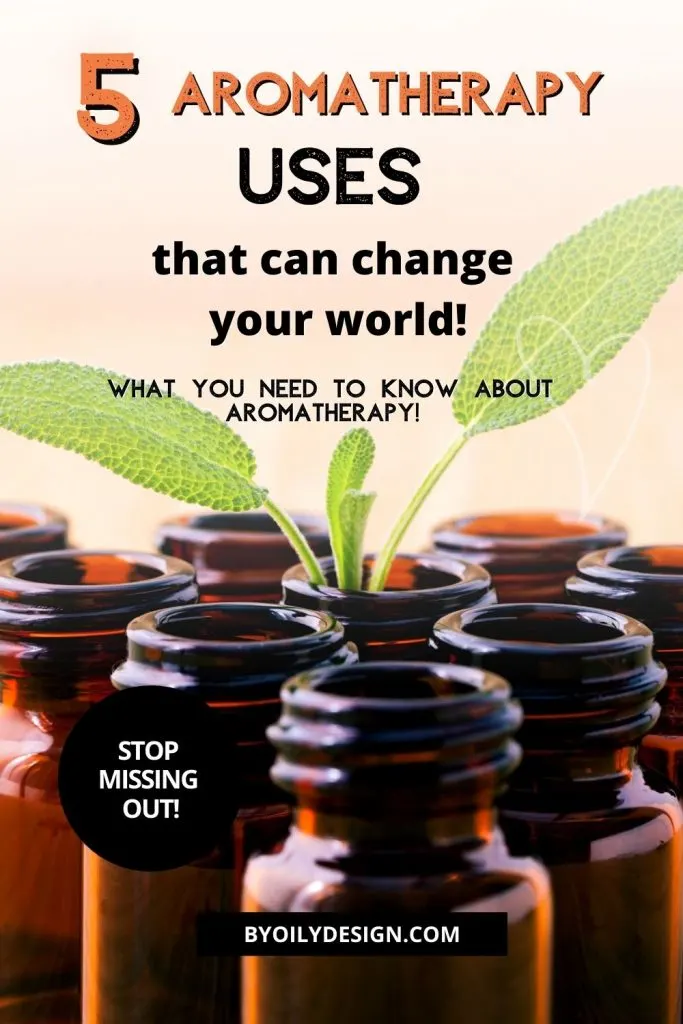
*This post contains affiliate links to the essential oils and other products I talk about in the post. Purchasing from the links here on my blog is no extra cost to you. However, I do earn a commission that helps in the cost of running this blog. Thanks for your support!
How to use aromatherapy?
Each essential oil comes with its own set of benefits. However, if you blend two or more oils, you can create a more powerful effect on the body. Once you have made the perfect essential oil blend, you can use this blend in different ways –
1. You can diffuse the oil into the air using a diffuser.
2. Apply a drop to your hands and inhale.
3. Wear it as a personal fragrance.
4. Massage diluted essential oil on your skin.
5. Add to lotions or moisturizers.
6. Add essential oils to your bathwater and soak in it.
Essential oil benefits
The aroma that you experience through aromatherapy and essential oils has a dynamic effect on the mind and body. Here are some of the common essential oil benefits –
1. Support relaxation
The essential oils used in aromatherapy can help to soothe the brain and reduce the feeling of stress. Lavender, peppermint, and lemon oil are some of the best oils for unwinding and relaxation.
2. Boosts energy
Essential oils can invigorate your senses and give you pep. The next time you are feeling low on energy, avoid coffee and opt for aromatherapy instead. Some of the best oils for boosting energy include peppermint, spearmint, and sweet orange essential oils.
3. Improves focus
Do you find your mind wandering during work or class? Essential oil aromatherapy can be used to support alertness, concentration, and focus. Some of the best essential oils for focus support include rosemary, lavender, basil, and peppermint.
4. Supports quality of sleep
Aromatherapy is known to promote restful sleep. It helps to realign the circadian rhythm and allows you to sleep better. The best oils for promoting restful sleep include chamomile, sandalwood, and lavender.
5. Supports sore muscles
Several oils can be used topically to relax and soothe muscle soreness, tension, and swelling. These include eucalyptus, yarrow, and marjoram.
6. Supports immunity
Having a weak immune system can expose you to many diseases. Essential oils like cinnamon, peppermint, oregano, and lemon contain properties that can help support your immunity so you can be your most healthy self.
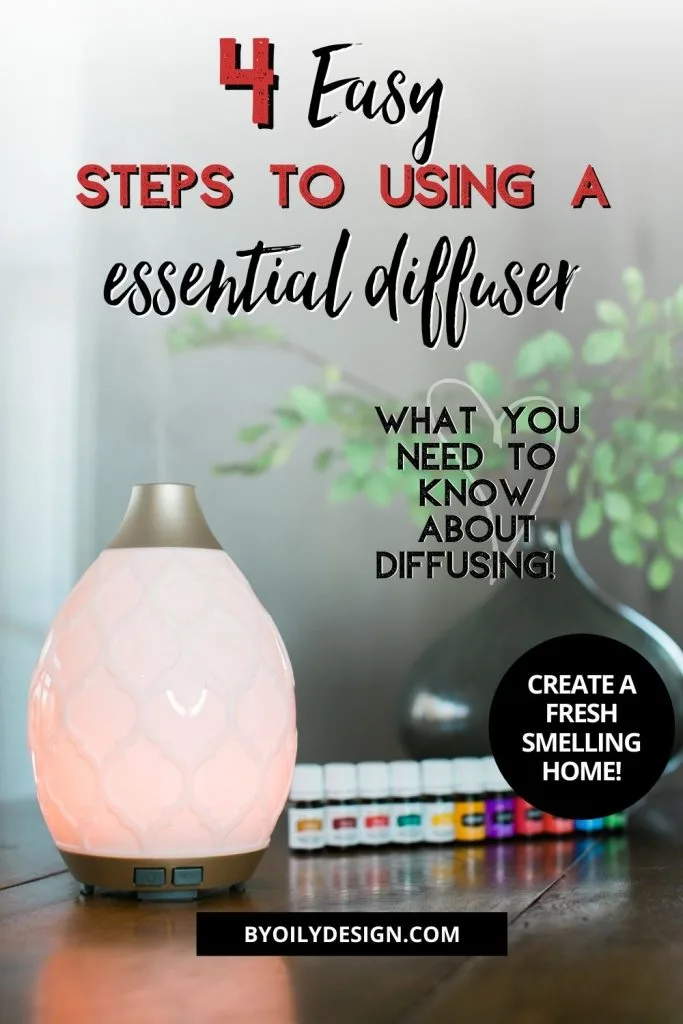
How to use essential oils diffuser?
As mentioned above, there are several ways to use essential oils, but the most common way is to inhale them directly or using a diffuser or humidifier. But do you know how oil diffusers work? Let us find out.
You can plug your oil diffuser into the standard electric outlet. When it is plugged in, the ceramic disc inside vibrates. This vibration then breaks down the essential oils into tiny particles, which are then blended with water and dispersed into the air in an aromatic mist.
Your diffuser does all this intricate work for you. All you need to know is how to set it up. Here’s how you can use an essential oils diffuser –
1. Set it up
Identify the room where you would like to set up your diffuser. Place it on a table at least two feet above the floor to distribute the mist evenly. Place a tray under the diffuser so that you do not ruin your tabletop. Oils and water can damage furniture if allowed to sit too long.
2. Fill up the diffuser tank
Fill your diffuser with filtered water to the level indicated on the diffuser. It would help if you routinely filled up your diffuser. Regular tap water can cause mineral build-up, so try and use filtered water.
3. Add the oils
Now add the oils that you want to diffuse in the diffuser. You can blend different oils before you add them to the diffuser. Usually, 3 to 10 drops of oil are recommended. Don't be afraid to experiment.
4. Turn it on
Replace the cap of your diffuser and enjoy the wonderful aroma.
Check out our post on the Dangers of essential oil diffusers
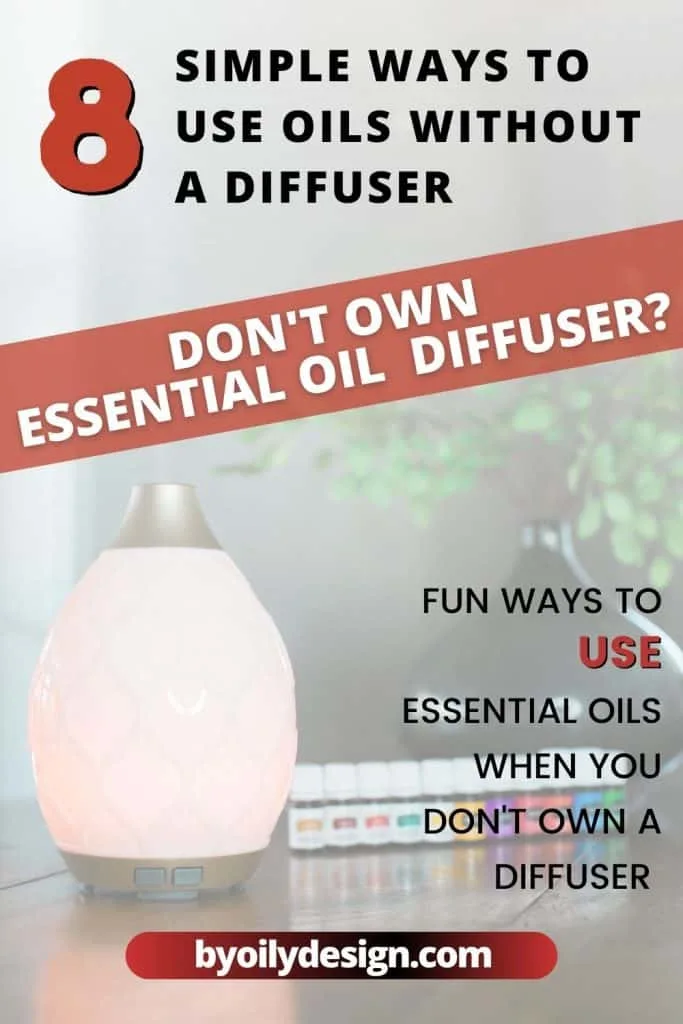
How to use essential oils without a diffuser?
If you don’t own a diffuser but still want to enjoy the benefits of essential oils, there are plenty of ways to do so.
1. Inhale direct from the bottle
This is the quickest and easiest way to enjoy essential oils. Take a bottle of essential oil, remove the cap, and take in a deep breath. Hold your breath for a couple of seconds and then release and repeat.
2. Use a cotton ball
Put a few drops of the essential oil or blend of your choice on a cotton ball. Place this cotton ball near your pillow or the fan vent of your car. The air of the fan will diffuse the scent.
3. Use your hands
Put one drop of the essential oil of your choice on one of the palms of your hands. Rub your palms together and then cup them over your nose and inhale.
4. Make a room spray
Making an essential oil spray is an easy way to enjoy essential oil benefits. Take a glass spray bottle and add 20 drops of essential oil to it. Now fill half the bottle with distilled water and the other half with witch hazel. Replace the lid and shake well before you use it.
Check out our super popular room spray recipes to get ideas on what you can make.
5. Add to the dryer
Add a few drops of the essential oil of your choice to wool dryer balls before putting them in the dryer and let them work their magic. Your clothes will come out smelling better than ever.
6. Essential oil jewelry
Essential oil jewelry (necklaces and bracelets) is an affordable alternative to diffusers. They use terracotta, oil pads, or lava beads. When you put essential oils on these, it is absorbed completely and then slowly diffused in the air.
Here is a post with some of my favorite essential oil jewelry that anyone would love to have.
7. Use a tissue
Put a few drops of essential oil on a tissue or a washcloth and place it where you sleep or where you work. This can help you relax and sleep better.
8. Add to your bathwater
Draw a warm bath and add a few drops of your favorite essential oil. Enjoy a warm relaxing bath and let your stress melt away.
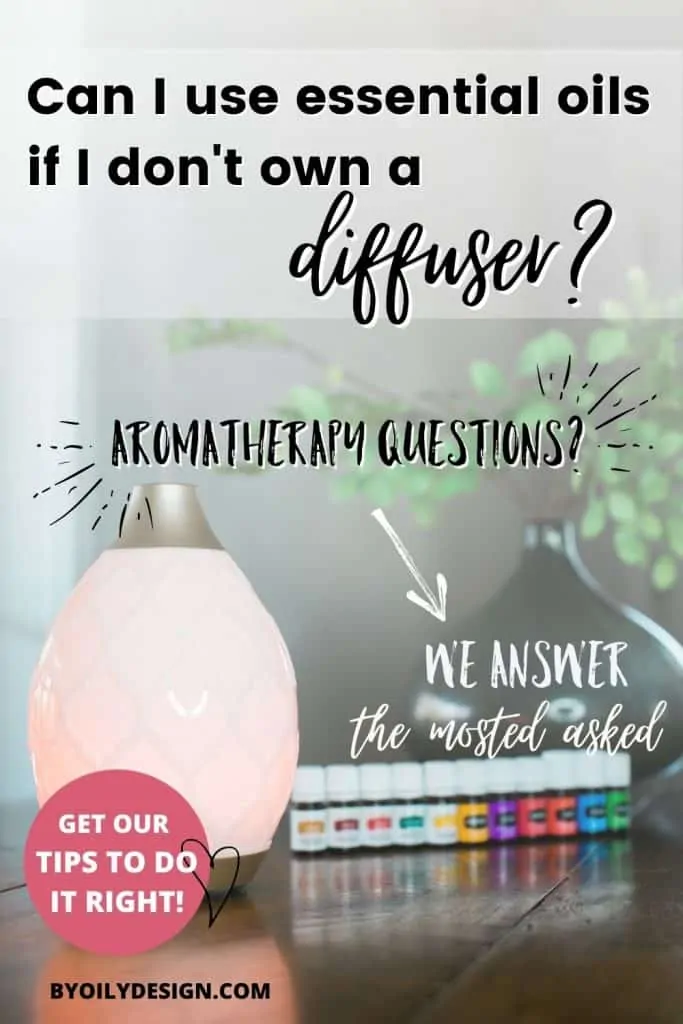
How to use essential oils to scent a room?
There's nothing like a whiff of fresh fragrance to melt away your stress and help you relax. Unfortunately, most commercial room fresheners contain chemicals that can be harmful to your respiratory system. Essential oils are a safe and natural way to freshen up your home. Here's how to use essential oils to scent a room –
1. Use a diffuser
A diffuser creates a water mist, which spreads a pleasing aroma in the room.
2. Toilet paper roll
To keep your bathroom smelling fresh, put a few drops of essential oil on the inside of the toilet roll, and put the toilet roll in its original place.
3. Water bead diffuser
Water beads are generally used in faux flower arrangements. To use them, first submerge them in water for 24 hours. Once they are hydrated, add essential oils of your choice and stir.
4. Tissue box
If you want to add a subtle scent to a smaller room, add a few drops of essential oil to a tissue box and place it in the room. The scent will be released every time someone pulls out a tissue.
5. Scented light bulb
Put two or three drops of essential oil on a light bulb when it is turned off. When you turn the light on, the bulb's head will heat the essential oil, and the scent will spread to the room.
Home aromatherapy kit
Many of us are still working from home or spending a lot of time at home these days. This makes it even more important that you refresh your home with a relaxing and rejuvenating aroma.
Here are some of the best essential oils that you can add to your home aromatherapy kit.
- Lemon
- Wild orange
- Tea tree
- Rosemary
- Lavender
- Eucalyptus
- Peppermint
- Cinnamon
- Pine
- Thyme
This list doesn't have to be all your home aromatherapy kit is comprised of but it's an amazing starting point to buy a few to get comfortable with using essential oils.
I personally started with the Young Living starter kit because it was easy to buy a premade kit that covered all my needs. Plus it was super economical and saved me money.
Check out the Young Living starter kit and see how much money you can save.
Looking for an even larger list of oils? Check out this post on Examples of essential oils where I break down all the different types of essential oils and give you a list even the most seasoned aromatherapy love will drool over.
Frequently asked questions about aromatherapy
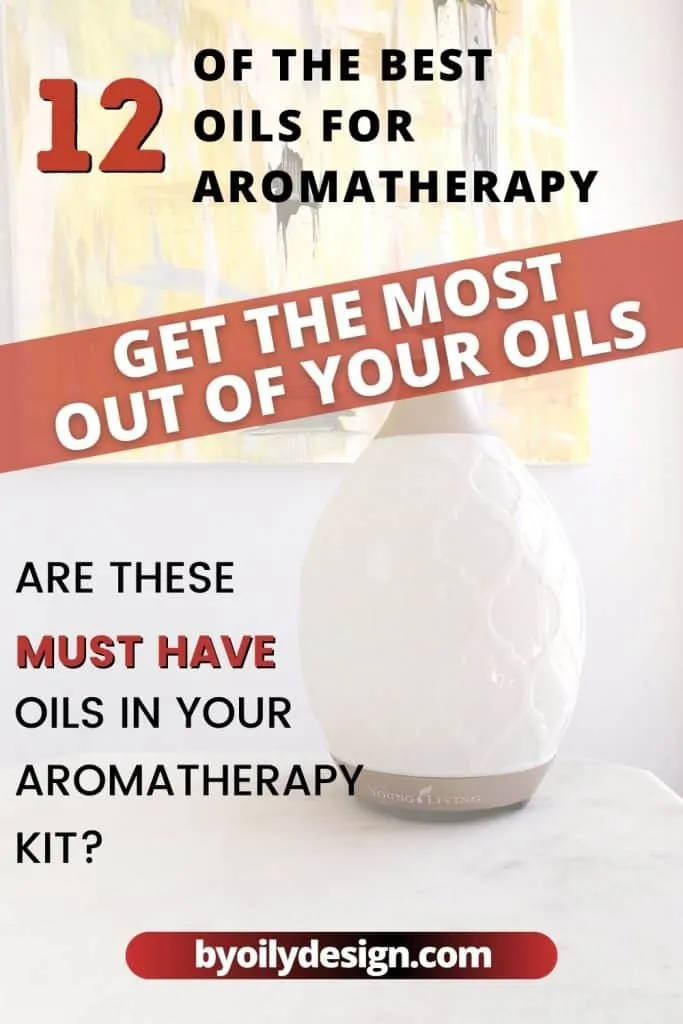
1. Which oil is best for aromatherapy?
Essential oils offer a whole range of benefits, including improving health, relaxation, and home care. Some of the best essential oils for aromatherapy include –
- Lavender
- Frankincense
- Peppermint
- Eucalyptus
- Tea tree
- Grapefruit
- Rosemary
- Lemon
- Sweet orange
- Patchouli
- Bergamot
- Lemongrass
2. How do you dilute oils for aromatherapy?
You can dilute essential oils by incorporating them into carrier oils or a moisturizer or scrub. A safe dilution ratio for most aromatherapy and personal care applications is 2%. A maximum of 1% dilution should be used on children, pregnant women, the elderly, and those with health concerns.
- 1% dilution: Approximately 6 drops essential oil per ounce of carrier oil
- 2% dilution: Approximately 12 drops essential oil per ounce of carrier oil
3. Can you mix essential oils with water?
Essential oils and water do not mix. However, you can make an essential oil spray by putting a few essential oil drops in a spray bottle with distilled water and adding salt. Shake well before each use.
Final thoughts
Aromatherapy is a great natural way to improve your health and general wellness. You can invest in a home aromatherapy kit and an oil diffuser to enjoy the healing benefits of aromatherapy. If you don't want to invest in a diffuser yet, there are several other ways to use essential oils to scent your home. So, go on and enjoy the healing and rejuvenating powers of essential oils
Want to buy the best essential oils so you can enjoy Oil diffuser benefits? I'd love to help get you started!
When you sign up with me as your enroller you get amazing support and education for not only the Lavender, peppermint, and lemon oils you need for a fresh smelling home, but all the wonderful essential oils and non-toxic products Young Living has to offer.
I even have an FREE Essential oils reference app just for those that enroll with me! I want you loving your oils and getting the most out of them you can.
Ready to get started? Click on the below image and let's get the young living starter kit in your hands.
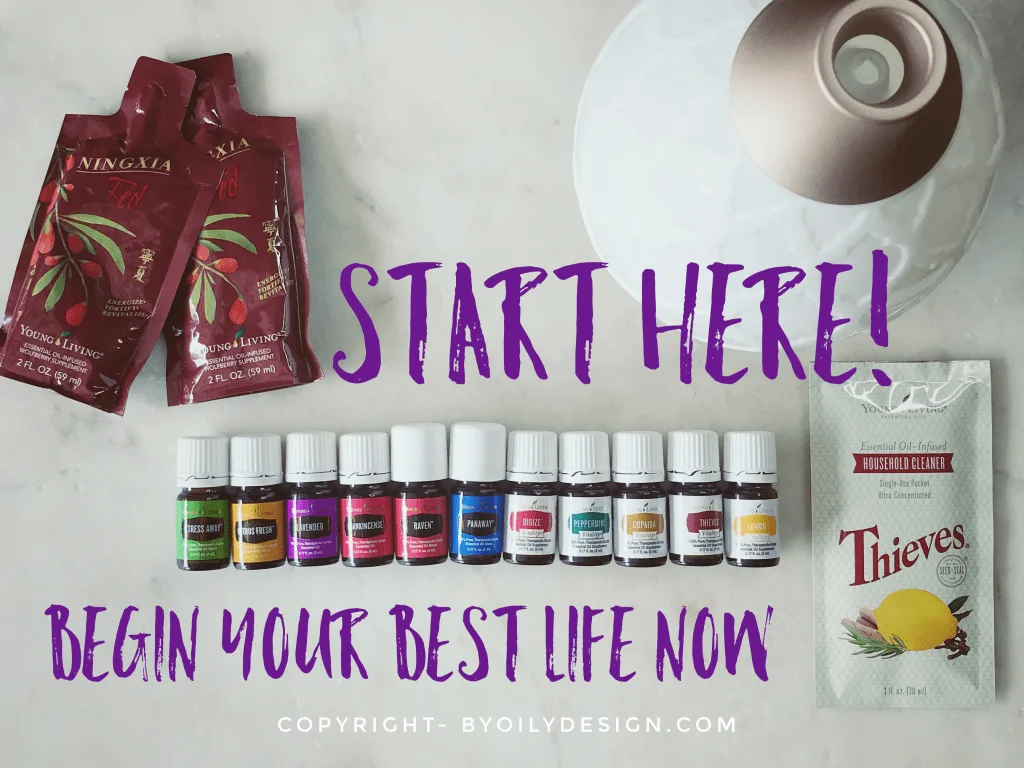
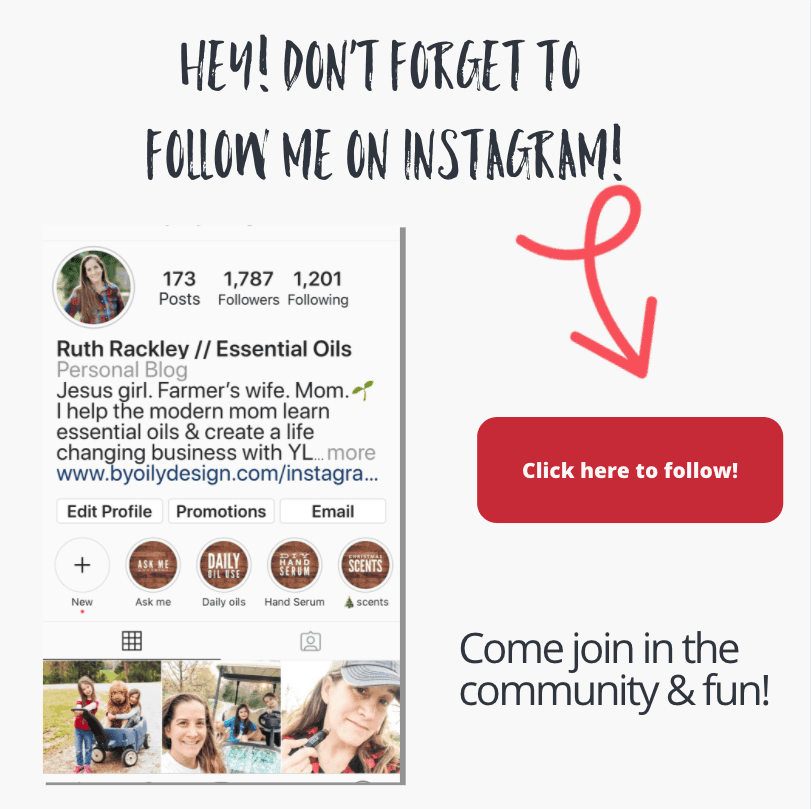
Written by Manveen Grewal , Edited by Ruth Rackley
